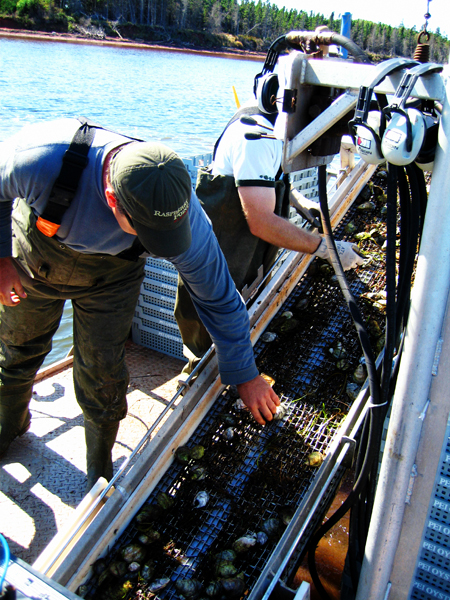Perhaps because my physique is such that, until middle-age spread took over, I was regularly asked if I played football or basketball, I’ve always enjoyed the gustatory habits of large men. Like Andrew Chase, a Toronto chef and cookbook author who has the stature and girth of, as well as an eerie resemblance to, Big Bird. Minus the feathers and yellow coloring, of course.
Andrew loves impeccably fresh seafood. As do I. He’s the sort of guy that would (and did) ask me if I wanted to go in with him on a 100-count box of Raspberry Point oysters to take back to our hotel in Charlottetown on Prince Edward Island in case we, you know, got hungry later that night.
This just after the two of us had stood chilled to the bone on an oyster barge in the middle of New London Bay eating fat malpeques, the queen of Atlantic oysters, faster than James Power, who runs Raspberry Point’s oyster farm near the pristine shores of Prince Edward Island National Park, could dredge them up off the muddy tidal basin floor.
The sea breeze cutting our faces like knives, we’d grab the icy oysters as they moved up a conveyor belt on the barge, quickly pry them open and slurp them down, marveling in their salty, clean taste and sweet finish.
How many did we eat out in the bay before our hands got so cold that it was difficult to even feel the slippery mollusks in our hands? Enough that James good-naturedly reminded us that it took him six to seven years to groom these little sweeties.
“Consider leaving a few for the spudheads,” he said, a spudhead being a local from Prince Edward Island. There’s a reason why they’re called spudheads, of course. But we’ll save that story for tomorrow.
Tags: Canada, Prince Edward Island


Recent Comments